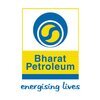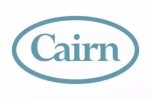Filter interviews by
Schlumberger Intern Interview Questions and Answers
6 Interview questions
Refrigeration cycle is a process in which a refrigerant absorbs heat from a low-temperature space and releases it in a high-temperature space.
Refrigerant absorbs heat from the low-temperature space (evaporator)
Refrigerant is compressed to increase its temperature and pressure
High-temperature refrigerant releases heat in the condenser
Refrigerant expands in the expansion valve to lower its temperature and pressure
Cy...
Different types of fit in GD&T include clearance fit, interference fit, and transition fit.
Clearance fit: Parts are intended to have a gap between them for easy assembly and disassembly.
Interference fit: Parts are intended to be pressed or hammered together for a tight fit.
Transition fit: Parts have a combination of clearance and interference fit depending on the specific requirements.
Examples: A clearance fit is ...
The project is used in real world by implementing its features in various industries and organizations.
The project's software can be integrated into existing systems to improve efficiency and productivity.
The project's findings can be used to make data-driven decisions in business operations.
The project's recommendations can be implemented to optimize processes and achieve better outcomes.
The project's technology ...
A BJT is a three-layer semiconductor device that amplifies current.
Consists of a base, collector, and emitter
Current flows from the collector to the emitter
The base controls the amount of current flowing through the transistor
Can be used as an amplifier or switch
Examples include audio amplifiers and digital logic circuits
I have experience in various internships related to my field of study.
Interned at XYZ Company, assisting with data analysis and research projects.
Completed a summer internship at ABC Hospital, shadowing doctors and nurses.
Worked as an intern at DEF Organization, helping with event planning and coordination.
Participated in a research internship at GHI University, conducting experiments and analyzing data.
Material properties refer to the characteristics and behaviors of materials under specific conditions.
Material properties include mechanical, thermal, electrical, and optical properties.
Examples of material properties are strength, conductivity, melting point, and refractive index.
Understanding material properties is crucial for designing and selecting materials for specific applications.
Schlumberger Intern Interview Experiences
4 interviews found
I applied via Campus Placement
Asked us to code given two questions on strings and arrays
(2 Questions)
- Q1. Asked us about the projects
- Q2. How the project used in real world
- Ans.
The project is used in real world by implementing its features in various industries and organizations.
The project's software can be integrated into existing systems to improve efficiency and productivity.
The project's findings can be used to make data-driven decisions in business operations.
The project's recommendations can be implemented to optimize processes and achieve better outcomes.
The project's technology can b...
Interview Preparation Tips
Skills evaluated in this interview
I applied via Approached by Company and was interviewed before Apr 2023. There was 1 interview round.
(3 Questions)
- Q1. Explain Refrigeration cycle
- Ans.
Refrigeration cycle is a process in which a refrigerant absorbs heat from a low-temperature space and releases it in a high-temperature space.
Refrigerant absorbs heat from the low-temperature space (evaporator)
Refrigerant is compressed to increase its temperature and pressure
High-temperature refrigerant releases heat in the condenser
Refrigerant expands in the expansion valve to lower its temperature and pressure
Cycle r...
- Q2. What are the different types of fit in GD& T
- Ans.
Different types of fit in GD&T include clearance fit, interference fit, and transition fit.
Clearance fit: Parts are intended to have a gap between them for easy assembly and disassembly.
Interference fit: Parts are intended to be pressed or hammered together for a tight fit.
Transition fit: Parts have a combination of clearance and interference fit depending on the specific requirements.
Examples: A clearance fit is used ...
- Q3. Material Properties
- Ans.
Material properties refer to the characteristics and behaviors of materials under specific conditions.
Material properties include mechanical, thermal, electrical, and optical properties.
Examples of material properties are strength, conductivity, melting point, and refractive index.
Understanding material properties is crucial for designing and selecting materials for specific applications.
Interview Preparation Tips
Don't make up the the when you don't know the answer as interviewer is the expert in the field and knows more than you.
Be honest always don't lie with your skills.
Skills evaluated in this interview
I applied via Company Website and was interviewed in Mar 2023. There were 2 interview rounds.

(2 Questions)
- Q1. Tell me about a project that you worked on
- Ans.
I worked on a project to develop a mobile app for a local restaurant.
Developed a user-friendly mobile app for a local restaurant
Implemented features such as menu browsing, online ordering, and reservation booking
Collaborated with a team of developers and designers to ensure smooth functionality and appealing design
Conducted user testing and gathered feedback to make necessary improvements
Successfully launched the app o...
- Q2. How does a bjt work?
- Ans.
A BJT is a three-layer semiconductor device that amplifies current.
Consists of a base, collector, and emitter
Current flows from the collector to the emitter
The base controls the amount of current flowing through the transistor
Can be used as an amplifier or switch
Examples include audio amplifiers and digital logic circuits
Interview Preparation Tips
I appeared for an interview in Sep 2016.
Interview Questionnaire
2 Questions
- Q1. Tell about your project
- Ans.
Developed a mobile app for tracking daily water intake
Designed user-friendly interface for easy input of water consumption
Implemented reminders to encourage regular hydration
Integrated with health tracking apps to provide comprehensive health data
Received positive feedback from beta testers for improved hydration habits
- Q2. Tell about your por
- Ans.
I have experience in various internships related to my field of study.
Interned at XYZ Company, assisting with data analysis and research projects.
Completed a summer internship at ABC Hospital, shadowing doctors and nurses.
Worked as an intern at DEF Organization, helping with event planning and coordination.
Participated in a research internship at GHI University, conducting experiments and analyzing data.
Interview Preparation Tips
Duration: 20 minutes
College Name: BITS Pilani
Top trending discussions






Interview questions from similar companies

Intern Interview Questions & Answers
Oil And Natural Gas Corporationposted on 22 Jun 2022
I applied via Company Website and was interviewed before Jun 2021. There were 2 interview rounds.

Energy law assignment
Interview Preparation Tips
- Contracts
- Energy Management
try using IRAC method while doing the assignment
add as many as case laws

60 minute 60 questions
General topics were asked on how manufacturing sector getting affected
(2 Questions)
- Q1. Previous internship job related qns asked
- Q2. Situation when u faced adversity and how you fought it

(2 Questions)
- Q1. Introduce your self
- Q2. Why only hpcl why not bpcl
- Ans.
I have a strong interest in the oil and gas industry, and HPCL aligns more closely with my career goals and values.
HPCL offers a wider range of career opportunities in the oil and gas sector compared to BPCL.
I have researched HPCL extensively and believe that their company culture and values are a better fit for me.
HPCL has a stronger presence in the market and offers more room for growth and development.
(3 Questions)
- Q1. Net positive suction head
- Q2. Distillation column
- Q3. Absorption tower
Interview Preparation Tips

(1 Question)
- Q1. What is rtdand thermocouple
- Ans.
RTD and thermocouple are types of temperature sensors used in various industries.
RTD stands for Resistance Temperature Detector and uses the principle of change in electrical resistance with temperature to measure temperature.
Thermocouple uses the principle of Seebeck effect where a voltage is generated when two dissimilar metals are joined at two junctions and exposed to different temperatures.
RTD is more accurate and...
(1 Question)
- Q1. Why should we hire you?
Interview Preparation Tips
More learning

Intern Interview Questions & Answers
Oil And Natural Gas Corporationposted on 25 Aug 2023

Group discussion will be tough
(1 Question)
- Q1. Basic knowledge of gas industry
Interview Preparation Tips

Intern Interview Questions & Answers
Oil And Natural Gas Corporationposted on 29 Aug 2024
I applied via Walk-in and was interviewed in Jul 2024. There was 1 interview round.
(4 Questions)
- Q1. Types of pumps and classification of pumps
- Q2. Whats is meant by least of an instrument
- Q3. Types of Turbines
- Q4. Why intercooler is used
- Ans.
An intercooler cools compressed air in engines, enhancing performance and efficiency by reducing intake temperatures.
Reduces air temperature: Cooler air is denser, allowing for more oxygen in the combustion chamber.
Improves engine efficiency: Lower intake temperatures lead to better combustion and increased power output.
Prevents knock: Cooler air reduces the likelihood of pre-ignition or engine knock, which can damage ...
Interview Preparation Tips
Schlumberger Interview FAQs
Tell us how to improve this page.
Schlumberger Interviews By Designations
- Schlumberger Field Engineer Interview Questions
- Schlumberger Junior Field Engineer Interview Questions
- Schlumberger Software Engineer Interview Questions
- Schlumberger Business Analyst Interview Questions
- Schlumberger Design Engineer Interview Questions
- Schlumberger Intern Interview Questions
- Schlumberger Data Analyst Interview Questions
- Schlumberger Data Engineer Interview Questions
- Show more
Interview Questions for Popular Designations
Overall Interview Experience Rating
based on 3 interview experiences
Difficulty level
Duration
Intern Interview Questions from Similar Companies
Schlumberger Intern Reviews and Ratings
based on 4 reviews
Rating in categories
|
Business Process Analyst
202
salaries
| ₹13.7 L/yr - ₹27 L/yr |
|
Business Analyst
111
salaries
| ₹14.2 L/yr - ₹22 L/yr |
|
Mechanical Engineer
95
salaries
| ₹12 L/yr - ₹21 L/yr |
|
Software Engineer
83
salaries
| ₹13.7 L/yr - ₹27.8 L/yr |
|
Test Analyst
65
salaries
| ₹12 L/yr - ₹20 L/yr |

Reliance Industries

Indian Oil Corporation

Shell

Bharat Petroleum
- Home >
- Interviews >
- Schlumberger Interview Questions










